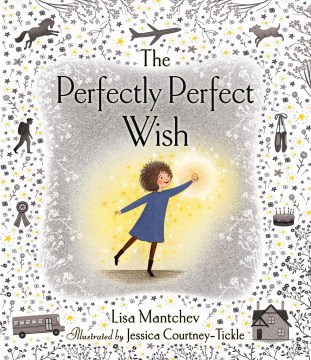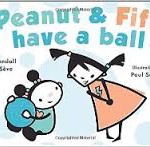
The girl finds a golden coin, with the words NO WISHING FOR MORE WISHES engraved on it. She spends the day at school dreaming about the one wish she has. Asking friends what they would wish for makes her realize that she already has everything she really wants and the extras can be earned through hard work or time. She then makes a truly wonderful wish – a wish that everyone else’s wish would come true. And, in the end, we see that everyone she asks receives their special wishes. Her teacher get the house she wishes for, her wheelchair bound friend gets a dog and her friend, Mark, has his military dad come home.
This warm, sweet story is a testament to generosity and empathy and will make kids really think hard about what their wishes might be. Soft grey colors with vivid shots of color at the right moments in the story move it along and give importance to important parts of the story.
Characters are diverse and the illustrations work into the story beautifully. This is definitely a book to purchase!


 Should Charlotte Share is a nice character development book. It helps children define what effect their choices may have on others and for themselves. Twenty-four pages in length, each “chapter” addresses a different decision and consequence. The first chapter explains that we make choices every day and that the choices we make have effects or consequences. The next four chapters target a specific behavior. Each behavior is given four pages; first is the scenario, the next two pages show the good and the bad outcome of the decision, the last page asks the reader “What would you do?” and delves deeper into the outcome of good and the bad consequence.
Should Charlotte Share is a nice character development book. It helps children define what effect their choices may have on others and for themselves. Twenty-four pages in length, each “chapter” addresses a different decision and consequence. The first chapter explains that we make choices every day and that the choices we make have effects or consequences. The next four chapters target a specific behavior. Each behavior is given four pages; first is the scenario, the next two pages show the good and the bad outcome of the decision, the last page asks the reader “What would you do?” and delves deeper into the outcome of good and the bad consequence.